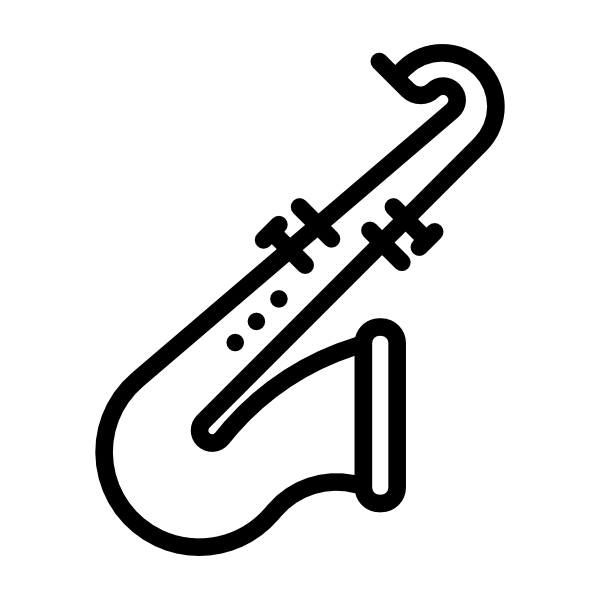George Bisharat sports an unusual pedigree for a blues musician, part of which he built in the Boston area while a student of law and anthropology at Harvard – with a brief stint as a student of resident harp genius Mike Turk thrown in for kicks.
After a career as a public defender then a law professor in San Francisco, George turned his focus to music, recording his first album, Chromaticism, in 2014. That effort earned “Best New Artist Album” nominations from both the Blues Foundation and Blues Blast Magazine. As both his artist name, “Big Harp George,” and the album title imply, George’s instrument of choice is the chromatic harmonica rather than the ten-hole diatonic harp favored by virtually all other blues players.
In George’s hands, the instrument has a fresh, melodic, and jazzy feel, aided in part by the fact that he often chooses to play acoustically, and he only occasionally reverts to the thick amplified sound achieved by cupping the harp over a specialized harp mic. If you’re looking for traditional blues harp licks, you won’t hear many of them from George. If you’re open to new approaches, however, George is your man.
In 2016, George released his second album, Wash My Horse in Champagne, followed by Uptown Cool in 2018 and Living in the City in late 2020. His recording home is Kid Andersen’s Greaseland Studios, and he has formed a core band that includes Kid (bass, guitar, and vocals), Chris Burns (producer and keyboards), Mike Rinta (trombone), Michael Peloquin (saxophone), Charlie Baty (guitar), and Loralee Christensen (backing vocals). George liberally sprinkles in additional musicians, as the songs require.
Living in the City has earned some high praise. Peter Dammann of the Waterfront Blues Festival called it a “masterpiece” for its imaginative arrangements, penetrating but often humorous lyrics, superb musicianship, and bold engagement of social and political themes. It includes the last recorded music of Little Charlie Baty, who passed away suddenly just five weeks later. The album is dedicated to his memory.
The opening track of Living in the City, “Build Myself an App,” is an ironic lament of the financial ruin inflicted by streaming services on musicians, and a wild fantasy about striking it rich in high tech. “Smoking Tires” is a scorching, funky number about the rubber George will burn escaping a sinking relationship. Both of these songs ride on great backing vocals from the Sons of the Soul Revivers, who also embellish four other songs.
The title track, “Living in the City,” is a jazzy uptown tune with a brilliant guitar solo from Little Charlie Baty and stunning backing vocal parts from Lisa Leuschner Andersen.
The next song, “Heading Out to Itaipu,” stretches the blues genre. In essence, it’s a Brazilian samba tune with great horn parts and a bluesy harp solo, but it really shows George’s increasing interest in the music of other traditions, particularly those in Brazil. Paraguayan harp and flute dress up this tune about a popular beach town outside Rio de Janeiro.
“Copayment” is a hilarious spoof of the costs of healthcare in the US, with an ending dialogue that can only have been derived from an actual conversation. The next several tunes showcase George’s affinity for jump (“Try Nice,” “First Class Muck Up”), jazz (the Basie-esque instrumental “Bayside Bounce”), and rumba (“Chew Before You Swallow”), with some free legal advice as a bonus (“Don’t Talk!”).
The mood shifts from lighthearted to somber with the lovely ballad “Enrique,” a tribute to hardworking immigrants and their contributions to our economy and society. It gets darker still with the amazing “Pusher in a White Coat,” addressing the profiteering of some in the medical profession from the opioid crisis at the expense of working class people.
But the closing number, “Meet Me at the Fence,” is the real stunner. It starts with a free improvisation by Palestinian artist Firas Zreik (a recent Berklee Music grad) on the qanun (zither), before turning to a sort of tango groove, augmented by Arabic percussion from Loay Dahbour. George trades verses with Palestinian star vocalist Amal Murkus about a family in the Gaza strip and their lives under siege, and the longing of Palestinian youths there for freedom and dignity.
Not the usual fare of blues songs, but here it feels heartfelt, natural, and thoroughly enchanting. A fitting end for one of the most interesting, challenging, and beautifully executed recordings you will hear from a blues musician for a long time.
Big Harp George’s recordings are available on his website and everywhere else you access music.
Website: https://www.bigharpgeorge.com/
Facebook: @BigHarpGeorge
Instagram: @bigharpgeorge
